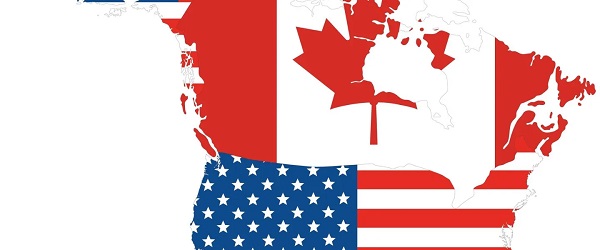Alberta
Alberta pushes back on illegal U.S. tariffs

Alberta’s government is implementing a proportionate, measured response to U.S. tariffs and taking decisive action on internal trade with free trade and mobility agreements.
As part of its non-tariff retaliatory measures, Alberta is altering its procurement practices to ensure Alberta’s government, as well as agencies, school boards, Crown corporations and Alberta municipalities, purchase their goods and services from Alberta companies, Canadian companies or countries with which Canada has a free trade agreement that is being honoured.
“I will always put the best interests of Alberta and Albertans first. These non-tariff actions are measured, proportionate and put an emphasis on defending Alberta and Canada against these economically destructive tariffs imposed by U.S. President Donald Trump, while breaking down restrictive provincial trade barriers so we can fast-track nation building resource projects and allow for the unrestricted movement of goods, services and labour across the country. I understand this is an uncertain time for many Albertans, and our government will continue to do all it can to prioritize Alberta’s and Canada’s world-class products and businesses as we face this challenge together. I also look forward to working with my provincial counterparts to help unite Canada and ensure free and fair trade throughout our country.”
Alberta’s government has also directed Alberta Gaming, Liquor and Cannabis to suspend the purchase of U.S. alcohol and video lottery terminals (VLTs) from American companies until further notice. This will ensure Alberta and Canadian brands take priority in restaurants, bars and on retail shelves.
“We are committed to putting Canadian businesses first. By suspending the purchase of U.S. produced alcohol, slot machines and VLTs, we are ensuring that Alberta and Canadian brands take priority in our restaurants, bars and retail stores. We will continue to take bold steps to support local industries and strengthen our economy.”
To encourage the purchase of stock from vendors in Alberta, Canada and other countries with which Canada has a free trade agreement, the government will help all Alberta grocers and other retailers with labelling Canadian products in their stores. In the coming weeks, Alberta’s government will augment these efforts by launching a “Buy Alberta” marketing campaign. Spearheaded by Minister of Agriculture and Irrigation RJ Sigurdson, this campaign will remind Albertans of their options for local food and the importance of supporting Alberta’s agriculture producers and processers.
“Alberta’s agriculture producers and processers are the best in the world. Although these U.S. tariffs are incredibly concerning, this “Buy Alberta” campaign will put a spotlight on Alberta’s farmers, ranchers and agri-food businesses and support Albertans in choosing goods from right here at home.”
Building on Alberta’s reputation as a leader in removing barriers to trade within Canada, Alberta’s government will continue to push other provinces to match our ambition in providing full labour mobility and eliminating trade barriers through work like mutual recognition of regulations. This will allow for goods, services and labour from other provinces to flow into and out of Alberta without having to undergo additional regulatory assessments.
“While no one wins in a tariff war, this situation underscores the need to develop Canada’s trade infrastructure and the diversification of our trading partners and could be the catalyst to unlocking Canada’s true potential. As we look at how best to support Albertans and our businesses, we must also work to reduce internal trade and labour mobility barriers while expanding markets for Alberta energy, agricultural and manufactured products into Europe, Asia, the Americas and beyond. Albertans and Canadians are counting on us.”
Alberta’s government is also focused on doubling oil production. With U.S. tariffs in place on Canadian energy products, Alberta is looking elsewhere for additional pipeline infrastructure, including east and west, in order to get our products to new markets.
Alberta’s government will continue to engage with elected officials and industry leaders in the U.S. to reverse these tariffs on Canadian goods and energy and rebuild Canada’s relationship with its largest trading partner and ally.
Quick facts
- On March 4, U.S. President Trump implemented a 25 per cent tariff on all Canadian goods and a 10 per cent tariff on Canadian energy.
- The U.S. is Alberta’s – and Canada’s – largest trading partner.
- Alberta is the second largest provincial exporter to the U.S. after Ontario.
- In 2024, Alberta’s exports to the U.S. totalled C$162.6 billion, accounting for 88.7 per cent of total provincial exports.
- Energy products accounted for approximately C$132.8 billion or 82.2 per cent of Alberta’s exports to the U.S. in 2024.
- About 10 per cent of liquor products in stock in Alberta are imported from the United States.
- U.S. products represent a small minority of the beer and refreshment beverage categories; however, a significant number of wines originate in the U.S.
- In 2023-24, about $292 million in U.S. liquor products were sold in Alberta.
- Alberta has been a longstanding supporter of reducing barriers to trade within Canada. In 2019, the province removed 21 of 27 exceptions, including all procurement exceptions, and narrowed the scope of two others. Since then, the province has only added 2 exceptions, which allow for the management the legalization of cannabis.
- Removing party-specific exemptions has helped facilitate even greater access to the Alberta market for Canadian companies in the areas of government tenders, Crown land acquisition, liquor, energy and forest products, among others.
Alberta
Petition threatens independent school funding in Alberta

From the Fraser Institute
Recently, amid the backdrop of a teacher strike, an Alberta high school teacher began collecting signatures for a petition to end government funding of independent schools in the province. If she gets enough people to sign—10 per cent of the number of Albertans who voted in the last provincial election—Elections Alberta will consider launching a referendum about the issue.
In other words, the critical funding many Alberta families rely on for their children’s educational needs may be in jeopardy.
In Alberta, the provincial government partially funds independent schools and charter schools. The Alberta Teachers’ Association (ATA), whose members are currently on strike, opposes government funding of independent and charter schools.
But kids are not one-size-fits-all, and schools should reflect that reality, particularly in light of today’s increasing classroom complexity where different kids have different needs. Unlike government-run public schools, independent schools and charter schools have the flexibility to innovate and find creative ways to help students thrive.
And things aren’t going very well for all kids or teachers in government-run pubic school classrooms. According to the ATA, 93 per cent of teachers report encountering some form of aggression or violence at school, most often from students. Additionally, 85 per cent of unionized teachers face an increase in cognitive, social/emotional and behavioural issues in their classrooms. In 2020, one-quarter of students in Edmonton’s government-run public schools were just learning English, and immigration to Canada—and Alberta especially—has exploded since then. It’s not easy to teach a classroom of kids where a significant proportion do not speak English, many have learning disabilities or exceptional needs, and a few have severe behavioural problems.
Not surprisingly, demand for independent schools in Alberta is growing because many of these schools are designed for students with special needs, Autism, severe learning disabilities and ADHD. Some independent schools cater to students just learning English while others offer cultural focuses, expanded outdoor time, gifted learning and much more.
Which takes us back to the new petition—yet the latest attempt to defund independent schools in Alberta.
Wealthy families will always have school choice. But if the Alberta government wants low-income and middle-class kids to have the ability to access schools that fit them, too, it’s crucial to maintain—or better yet, increase—its support for independent and charter schools.
Consider a fictional Alberta family: the Millers. Their daughter, Lucy, is struggling at her local government-run public school. Her reading is below grade level and she’s being bullied. It’s affecting her self-esteem, her sleep and her overall wellbeing. The Millers pay their taxes. They don’t take vacations, they rent, and they haven’t upgraded their cars in many years. They can’t afford to pay full tuition for Lucy to attend an independent school that offers the approach to education she needs to succeed. However, because the Alberta government partially funds independent schools—which essentially means a portion of the Miller family’s tax dollars follow Lucy to the school of their choice—they’re able to afford the tuition.
The familiar refrain from opponents is that taxpayers shouldn’t pay for independent school tuition. But in fact, if you’re concerned about taxpayers, you should encourage school choice. If Lucy attends a government-run public school, taxpayers pay 100 per cent of her education costs. But if she attends an independent or charter school, taxpayers only pay a portion of the costs while her parents pay the rest. That’s why research shows that school choice saves tax dollars.
If you’re a parent with a child in a government-run public school in Alberta, you now must deal with another teacher strike. If you have a child in an independent or charter school, however, it’s business as usual. If Albertans are ever asked to vote on whether or not to end government funding for independent schools, they should remember that students are the most important stakeholder in education. And providing parents more choices in education is the solution, not the problem.
Alberta
Busting five myths about the Alberta oil sands

Construction of an oil sands SAGD production well pad in northern Alberta. Photo supplied to the Canadian Energy Centre
From the Canadian Energy Centre
The facts about one of Canada’s biggest industries
Alberta’s oil sands sector is one of Canada’s most important industries — and also one of its most misunderstood.
Here are five common myths, and the facts behind them.
Myth: Oil sands emissions are unchecked

Steam generators at a SAGD oil sands production site in northern Alberta. Photo courtesy Cenovus Energy
Reality: Oil sands emissions are strictly regulated and monitored. Producers are making improvements through innovation and efficiency.
The sector’s average emissions per barrel – already on par with the average oil consumed in the United States, according to S&P Global – continue to go down.
The province reports that oil sands emissions per barrel declined by 26 per cent per barrel from 2012 to 2023. At the same time, production increased by 96 per cent.
Analysts with S&P Global call this a “structural change” for the industry where production growth is beginning to rise faster than emissions growth.
The firm continues to anticipate a decrease in total oil sands emissions within the next few years.
The Pathways Alliance — companies representing about 95 per cent of oil sands activity — aims to significantly cut emissions from production through a major carbon capture and storage (CCS) project and other innovations.
Myth: There is no demand for oil sands production

Expanded export capacity at the Trans Mountain Westridge Terminal. Photo courtesy Trans Mountain Corporation
Reality: Demand for Canadian oil – which primarily comes from the oil sands – is strong and rising.
Today, America imports more than 80 per cent more oil from Canada than it did in 2010, according to the U.S. Energy Information Administration (EIA).
New global customers also now have access to Canadian oil thanks to the opening of the Trans Mountain pipeline expansion in 2024.
Exports to countries outside the U.S. increased by 180 per cent since the project went into service, reaching a record 525,000 barrels per day in July 2025, according to the Canada Energy Regulator.
The world’s appetite for oil keeps growing — and it’s not stopping anytime soon.
According to the latest EIA projections, the world will consume about 120 million barrels per day of oil and petroleum liquids in 2050, up from about 104 million barrels per day today.
Myth: Oil sands projects cost too much
Reality: Operating oil sands projects deliver some of the lowest-cost oil in North America, according to Enverus Intelligence Research.
Unlike U.S. shale plays, oil sands production is a long-life, low-decline “manufacturing” process without the treadmill of ongoing investment in new drilling, according to BMO Capital Markets.
Vast oil sands reserves support mining projects with no drilling, and the standard SAGD drilling method involves about 60 per cent fewer wells than the average shale play, BMO says.
After initial investment, Enverus says oil sands projects typically break even at less than US$50 per barrel WTI.
Myth: Indigenous communities don’t support the oil sands

Chief Greg Desjarlais of Frog Lake First Nation signs an agreement in September 2022 whereby 23 First Nations and Métis communities in Alberta acquired an 11.57 per cent ownership interest in seven Enbridge-operated oil sands pipelines for approximately $1 billion. Photo courtesy Enbridge
Reality: Indigenous communities play an important role in the oil sands sector through community agreements, business contracts and, increasingly, project equity ownership.
Oil sands producers spent an average of $1.8 billion per year with 180 Indigenous-affiliated vendors between 2021 and 2023, according to the Canadian Association of Petroleum Producers.
Indigenous communities are now owners of key projects that support the oil sands, including Suncor Energy’s East Tank Farm (49 per cent owned by two communities); the Northern Courier pipeline system (14 per cent owned by eight communities); and the Athabasca Trunkline, seven operating Enbridge oil sands pipelines (~12 per cent owned by 23 communities).
These partnerships strengthen Indigenous communities with long-term revenue, helping build economic reconciliation.
Myth: Oil sands development only benefits people in Alberta
Reality: Oil sands development benefits Canadians across the country through reliable energy supply, jobs, taxes and government revenues that help pay for services like roads, schools and hospitals.
The sector has contributed approximately $1 trillion to the Canadian economy over the past 25 years, according to analysis by the Macdonald-Laurier Institute (MLI).
That reflects total direct spending — including capital investment, operating costs, taxes and royalties — not profits or dividends for shareholders.
More than 2,300 companies outside of Alberta have had direct business with the oilsands, including over 1,300 in Ontario and almost 600 in Quebec, MLI said.
Energy products are by far Canada’s largest export, representing $196 billion, or about one-quarter of Canada’s total trade in 2024, according to Statistics Canada.
Led by the oil sands, Canada’s energy sector directly or indirectly employs more than 445,000 people across the country, according to Natural Resources Canada.
-

 Alberta2 days ago
Alberta2 days agoClick here to help choose Alberta’s new licence plate design
-

 National2 days ago
National2 days agoDemocracy Watch Renews Push for Independent Prosecutor in SNC-Lavalin Case
-

 Alberta2 days ago
Alberta2 days agoBusting five myths about the Alberta oil sands
-

 Frontier Centre for Public Policy2 days ago
Frontier Centre for Public Policy2 days agoOttawa Should Think Twice Before Taxing Churches
-

 Business1 day ago
Business1 day agoUS government buys stakes in two Canadian mining companies
-

 Energy1 day ago
Energy1 day agoMinus Forty and the Myth of Easy Energy
-

 Health1 day ago
Health1 day agoNew report warns WHO health rules erode Canada’s democracy and Charter rights
-

 Business5 hours ago
Business5 hours agoQuebecers want feds to focus on illegal gun smuggling not gun confiscation







